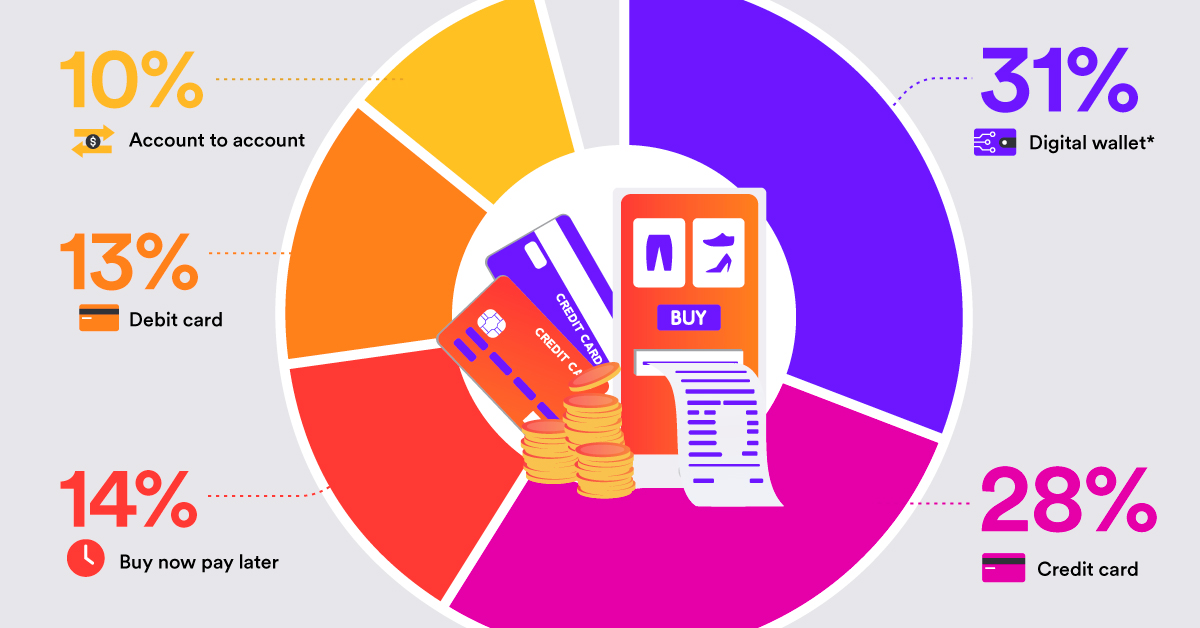Digital Transformation: 4 Essential Strategies for Businesses
4 Digital Strategies to Transform a Business
Digital technology can have a profound impact on the success of a business, so it’s no surprise that a whopping 93% of organizations are either operating with a digital-first business strategy or plan to in the future.
But what does digital transformation involve?
In this graphic, sponsored by Airwallex, we explore four strategies that are essential for digital transformation. Let’s dive in.
1. Embrace Embedded Finance
Embedded finance weaves financial products such as payment plans or insurance into non-financial products, creating symbiotic financial ecosystems with a variety of benefits for both the business and their consumers.
For example, Uber created a financial ecosystem using embedded finance by allowing customers to pay for their rides without the need for cash or cards, providing safety and security while securing payment in real time.
2. Optimize the Payment Experience
Businesses of all shapes and sizes can operate without borders because of the evolution of eCommerce. However they need to support the right payment solutions to reflect the changing behaviors of consumers.
In 2022, digital wallets were the most used eCommerce payment method globally, representing 49% of transaction value—significantly higher than credit cards (20%) and debit cards (12%).
According to the Global Payments Report, businesses must also consider regional payment trends that are local to their customers. In the Australian market for example, almost 25% of eCommerce transactional value comes from payment types like buy now pay later (BNPL) or direct transfers using Account-to-Account (A2A) payments.
| Australia’s eCommerce Payment Methods, 2022 | Share of Transactional Value (%) |
|---|---|
| Digital Wallet | 31% |
| Credit Card | 28% |
| Buy Now Pay Later | 14% |
| Debit Card | 13% |
| Account to Account | 10% |
| Other | 4% |
Moreover, Australia will continue to lead the digital wallet charge with an estimated CAGR of 16% to 2026 according to the same report.
3. Leverage Software Integration
Integrated and cloud-based software systems have become indispensable tools in digital transformation. These systems provide enhanced databases, advanced analytics, and provide valuable business intelligence.
In a 2023 survey, PwC found 78% of executives had adopted cloud technology in most or all parts of the business, and that this was unlocking significant value in many areas.
4. Automate Your Operations
Mundane and repetitive tasks can drain the resources of any business, which is why automation and artificial intelligence (AI) could not be left out of this list.
According to a survey by McKinsey, 41% of supply chain management companies and 32% of manufacturing companies reported up to a 10% decrease in overall costs after implementing AI technology.
Here is a further look at cost decreases from AI, by function as of 2021:
| Function | <10% | 10-19% | >=20% |
|---|---|---|---|
| Service Operations | 29% | 10% | 6% |
| Manufacturing | 32% | 7% | 3% |
| Human Resources (HR) | 25% | 3% | 1% |
| Marketing and Sales | 21% | 4% | 3% |
| Risk | 30% | 8% | 5% |
| Supply Chain Management | 41% | 7% | 4% |
| Product and/or Service Development | 20% | 4% | 6% |
| Strategy and Corporate Finance | 31% | 8% | 4% |
From the same source, we also learn that these companies report the highest increased revenue benefits from adopting AI for marketing and sales.
How to Facilitate Global Growth
By leveraging these four strategies, businesses can embrace digital transformation and grow effectively.
Trusted by over 100,000 companies worldwide, Airwallex’s software and APIs empower businesses to streamline global payments and financial operations, enabling businesses to grow without constraints.

Learn how you can grow your business without borders with Airwallex

-

 Technology1 day ago
Technology1 day agoAll of the Grants Given by the U.S. CHIPS Act
Intel, TSMC, and more have received billions in subsidies from the U.S. CHIPS Act in 2024.
-

 Technology3 days ago
Technology3 days agoVisualizing AI Patents by Country
See which countries have been granted the most AI patents each year, from 2012 to 2022.
-

 Brands5 days ago
Brands5 days agoHow Tech Logos Have Evolved Over Time
From complete overhauls to more subtle tweaks, these tech logos have had quite a journey. Featuring: Google, Apple, and more.
-

 Technology3 weeks ago
Technology3 weeks agoRanked: Semiconductor Companies by Industry Revenue Share
Nvidia is coming for Intel’s crown. Samsung is losing ground. AI is transforming the space. We break down revenue for semiconductor companies.
-

 AI3 weeks ago
AI3 weeks agoThe Stock Performance of U.S. Chipmakers So Far in 2024
The Nvidia rocket ship is refusing to slow down, leading the pack of strong stock performance for most major U.S. chipmakers.
-

 Technology3 weeks ago
Technology3 weeks agoRanked: The Most Popular Smartphone Brands in the U.S.
This graphic breaks down America’s most preferred smartphone brands, according to a December 2023 consumer survey.


